Modern cameras with their built-in modes for every anticipated photo situation from macro to landscapes have actually made it more difficult to learn camera basics by separating the photographer from the essential elements that make up a correct exposure. The purpose of this lesson is to break down camera exposure into three basic elements -- what I will be calling "speeds" -- and show how each of these elements relates to the others. From there you will find that it is easy to determine the correct exposure in any situation and that mastering control over exposure is what will provide you with creative control over your photograph.
The Three Speeds:
There are three elements that affect the amount of light hitting the camera sensor. We will refer to each of these elements as a "speed" in the sense that each controls in its own way how fast light is deposited on the sensor. The three speeds are: shutter speed, lens speed, and sensor sensitivity speed. the three need to be in harmony to produce a correct exposure. Sounds simple so far but gains in complexity as you realize that you can in fact make changes to any of these speeds (usually for aesthetic reasons) so long as you make an equal and opposite change in any of the other two speeds. Let's look at each speed separately and then see how they are related.
Shutter Speed:
Shutter speed is usually the easiest to understand. It simply refers to how long the camera shutter is open to allow light to pass on to the sensor. This is measured in seconds and fractions of seconds. The typical increments of shutter speeds starting from one second are:
1 second, 1/2 second, 1/4 second, 1/8 second, 1/15 second, 1/30 second, 1/60 second, 1/125 second, 1/250 second, 1/500 second, 1/1000 second, 1/2000 second.
Shutter speeds exist above and below these increments, but you will notice a trend in this list. Each shutter speed halves or doubles the speed of the shutter speed immediately before or after it. For instance, 1/125 second is twice as fast as 1/60 second and twice as slow as 1/250 second. Looked at another way, 1/125 second allows half the amount of light to pass as 1/60 second and twice the light as 1/250 second.
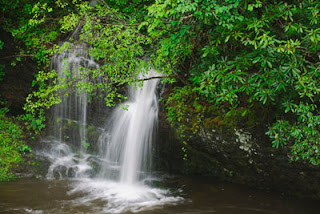 |
| A very slow shutter speed of 1/4 second was necessary to allow the running water to blur. To keep the rest of the scene in sharp focus it was necessary to have the camera on a tripod. |
In the past, full increments were the only shutter speeds cameras had. The advent of electronic shutters has allowed manufactures to create fractional shutter speeds. Adding to the confusing, the user can actually set the fractional increment in a menu option on most DSLR cameras. For now, it is important to grasp the basic shutter speed units listed above. The fact that they can be further divided into 1/3rd or 1/2 units won't alter the principle of inter-related speeds.
There are, of course, reasons why you would want to select one shutter speed over another. Typically these reasons have to do with selecting a fast shutter speed that will freeze a particular action, or selecting a slow shutter speed because it will allow you to close the lens aperture further to increase the area of focus, called "depth of field". We will cover these creative reasons in more detail individually in a future lesson. For now, let us stick to how the three speeds are related on one another.
Lens Speed:
The speed of a lens is controlled by its aperture, and reflected in a number called the "f/stop". The aperture is a moving diaphragm inside the lens that changes in size. As it opens, it allows more light to pass through the lens to the sensor. As it closes, it cuts the amount of light passing on to the sensor. Here is a list of the common f/stop apertures found on camera lenses:
f/1.4, f/2, f/2.8, f/4, f/5.6, f/8, f/11, f/16, f/22, f/32
As with shutter speeds, there are further aperture openings beyond this list, but this is the practical limit. Like shutter speeds, these apertures also half and double each other so that an aperture of f/4 allows half as much light to pass as f/2.8, and twice as much light at f/5.6. Also like shutter speeds, apertures can be further broken down into thirds or half units by setting the camera menu. For now we will stick to the full one-stop increments as an easier way of understanding exposure relationships.
Sensor Speed:
Sensor speed is the speed at which the sensor captures light. It is measured in ISO. Most modern sensors have a base ISO of 100 or 200. From there sensors increase in speed in increments similar to the other two speeds, namely by doubling the light sensitivity of the prior speed as follows:
ISO 100, 200, 400, 800, 1600, 3200, 6400, 12800.
Each unit doubles or halves the nearest unit. For instance, ISO 400 has the sensor capturing light twice as fast as ISO 200 and half as fast as ISO 800. You might ask why not go for the highest available ISO? The answer is that any increase or decrease in ISO speed from the camera base unit (referred to as the "native ISO") degrades image quality by introducing noise (similar to "grain" in film) , and loses detail. So increasing (or decreasing) ISO speed from the norm is a trade off.
As with the other speeds, ISO can be further broken down in 1/3rd increments. (e.g. 200, 250, 320, 400, etc.) For the purposes of our discussion, let's not confuse the issue and stick to the full units in all speeds.
Putting it all together:
A light meter is used to measure the amount of light falling on a scene. Modern DSLR cameras have a light meter built into them. Professional photographers will usually also have a hand held separate light meter to determine accurate readings of a scene and to record the differences between the shadows and highlights. For now, let's just work with the built-in camera meter.
When you look through the viewfinder of your DSLR you should be able to see the light meter scale. If you don't know where it is, consult your camera manual. Most scales have a center mark, usually a line, that marks when the exposure is correct. There should also be a plus (+) and minus (-) indicator on either side of the center line. In between there are usually marked scale increments. These may be given in thirds, halves, of full speed increments.
The correct exposure for any scene is measured by the central indicator of the exposure scale. There should also be a second moving element -- a line, dot, or light -- that indicates the manual setting of the camera as it relates to the correct exposure. Simply put, when your camera is in manual (M) mode and the center of the exposure scale is lined up with the moving element of the scale the camera is set for a correct exposure. If the moving part of the scale is on the minus (-) side of the scale, your camera setting is under-exposed and the picture will be too dark. If the moving part of the scale is on the plus (+) side of the scale, your picture is over-exposed and will come out too bright.
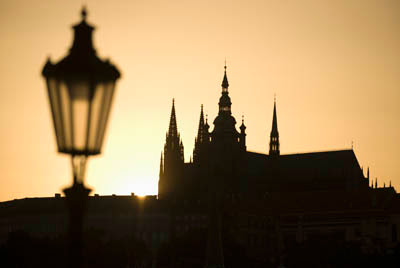 |
| Deciding to have the cathedral in silhouette and the foreground lamp out of focus were creative decisions the photographer used in determining the exposure for this scene. |
How to achieve a correct exposure in manual mode:
With your camera in manual (M) mode, you first need to select an ISO setting. This is usually done from either a menu option of a button or dial marked "ISO" on the camera body. Sensor speed (ISO) degrades image quality as it increases so you want to keep it set as close to the native ISO of the camera as you can. Circumstances will dictate what you can do. On a normal, sunny, or lightly overcast day, it is usually best to leave it at the native ISO setting of 100 or 200. Indoors or on an overcast day or deep shadow area, you will want to increase ISO. For this a range of ISO 400-800 will do the trick -- keeping in mind that lower is better. In very dimly lit situations, such as at night, in a darkened room or club, you will need to boost the ISO towards its maximum level - a range between 800-6400. As a rule of thumb, try not to boost the ISO beyond 1600. On most cameras image quality deteriorates dramatically above that.
Once you have set your ISO, open your lens aperture (f/stop speed) to its maximum opening. Next change the shutter speed until you zero out the exposure scale that is in your camera on the camera display. By "zero out", I mean move the needle, or whatever mark your camera has, until it coincides with the middle setting of the exposure scale. At this point, you have achieved a correct exposure setting . The next thing to understand is that there can be more than one correct exposure. Understanding this and how to make exposure changes is at the heart of why you would want to use the manual setting at all.
Relationship of the three speeds:
We have already seen that each of the three speeds -- shutter speed, lens speed (f/stop), and sensor speed (ISO) -- half and double the increment above and below it. That means that all three speeds are related in the same way. If you make a change in any one of them, you can equalize that change with a move in the opposite direction of one of the other speeds. Let's look at an example.
Suppose you have a correct exposure of ISO 200, f/2.8, and 1/500 second, but instead of f/2.8, you want to have an aperture of f/5.6. f/5.6 is two steps away from f/2.8 (f/2.8 to f/4 to f/5.6). To compensate for that move you have to make an opposite move with one of the other speeds. For instance, you could decrease the shutter speed to 1/125 second (1/500 to 1/250 to 1/125 equals a move of two increments). Alternatively, you could increase the sensor speed from ISO 200 to ISO 800 (ISO 200 to ISO 400 to ISO 800 is two speed increments). Instead of either of these moves you could have decided to make one incremental change in the ISO from ISO 200 to ISO 400, and one shutter speed change from 1/500 second to 1/250 second. That also would have equaled a two stop speed change to equalize the 2-stop change you made to the aperture.
Conclusion:
The question all this raises is "why" you would want to have control over your exposure speed settings. The answer to this is that selection of aperture, shutter speed, and to some extent ISO is a creative decision. There are specific reasons why you would want a slow or fast shutter speed or why you would want to select an open or closed aperture. There are practical reasons also.
Knowing when and why to veer off of the "correct" exposure is what creative photography is all about. The next three lessons will cover each of the three speeds in depth and explain the practical and creative potential of each.


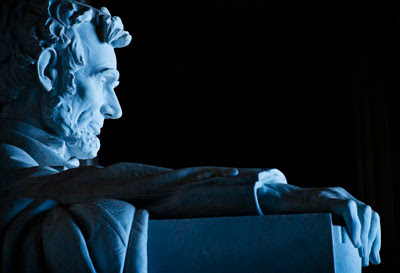
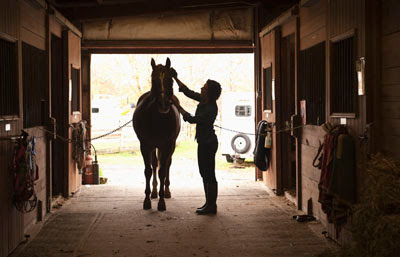
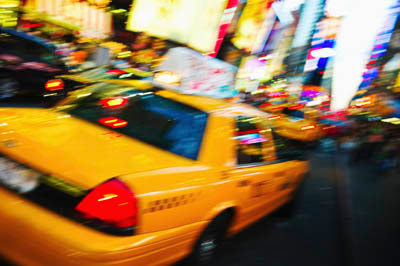
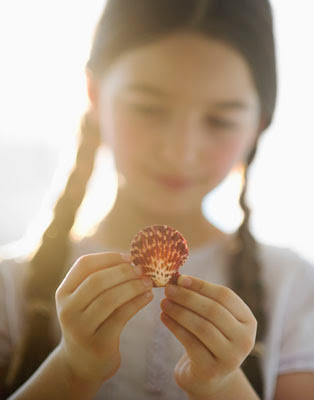

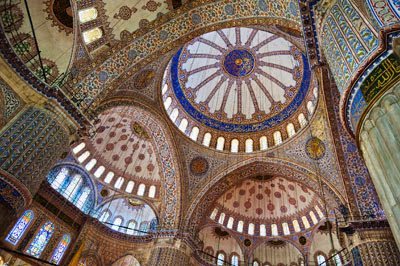


I love surfing the web and discover new places! I've found yours and I have become a time gossiping,
ReplyDeletereading and I love it! Besides, I really like to participate and support the bloggers, but we support each other,
who would ?¿?¿? I follow you and give you my congratulations, I left mine, if you like and think I deserve it, I would love to be part of the "following"
for girls / I like you make it possible and very special for me! a besin
KEYKOAMODEL.BLOGSPOT.COM
Nice photographY! you've done really awesome job! thanks a lot for sharing this nice post & I'll visit your site again :)
ReplyDeleteHi Tom - I love your shots against the light - the photo in the stable is amazing. I have a question - how do you focus in these situations? I tried to focus on person's face (eye) when they stand with their back to the window, and AF just doesn't do the job. The shots are just out of focus. Is manual focus only option here or there is some special technique for situations like this?
ReplyDeleteHello Tom- I just wanted to thank you for giving such great photography lessons. I've been snapping pictures for years and just recently decided I wanted to better understand what it is I'm trying to do. Your blog is fantastic and I hope you continue on with your posts. You make it so much easier to comprehend.
ReplyDeleteTom, it is great to find such an informative blog. You deal very nicely with many issues that face budding photographers. I find myself at the point where I am trying to work out what kind of photography I want to focus on and your interview on the Leica Camera blog inspired me to aim to be a stock photographer. I am a teacher, so this would be a way that I could fund (hopefully) my equipment and gear needs (wants!). My question is this - on a limited budget (less than $2000) where should I spend my first money? I hope to grow a system, but want to start out with useful equipment that will allow me to shoot a variety of different things and at a quality that is suitable for stock. Big question, but I thought I'd throw it out there. Thanks for any response you may give.
ReplyDeleteThis is an excellent question and one that might be of interest to others beginning to shoot seriously. I think I will do a blog post on it. Give me a week to prepare the article. Then check back with this blog.
ReplyDeleteMany thanks for your interest and suggestion. - Tom
When you look through the DSLR lense, you will going to imagine how photography creates awesome effect in minds of people. Than adopt creative Photography techniques which help to produce better results.
ReplyDeleteI really enjoyed your blog Thanks for sharing such an informative post.
ReplyDeleteThis site is really cool! I found here alot of information that I was looking for. I am really happy to be a part of This site! reviewworldextra-education
ReplyDeleteExcellent write up and wonderful describe. Your post is very helpful for me. A big thanks for sharing !!
ReplyDeleteWow,very good and informative post.It is very helpful for beginners as you describe it very easily. This article might help in my work as well. I’m working on photo retouching platform for my image editing stuffs. so; I’ll follow your instruction for my own work. The photos you have shared over there are also seems very vivid and live. Thanks for sharing such informative tips. Please keep sharing more.
ReplyDeletephoto retouching
Smm panel
ReplyDeletesmm panel
İs ilanlari
İnstagram Takipçi Satın Al
hirdavatciburada.com
www.beyazesyateknikservisi.com.tr
SERVİS
Tiktok jeton hile
Good content. You write beautiful things.
ReplyDeletehacklink
vbet
hacklink
taksi
sportsbet
sportsbet
vbet
korsan taksi
mrbahis
esenler
ReplyDeletekütahya
sarıyer
serdivan
siirt
XBY
siirt
ReplyDeleteçankırı
kars
bandırma
erzincan
OJD88
yurtdışı kargo
ReplyDeleteresimli magnet
instagram takipçi satın al
yurtdışı kargo
sms onay
dijital kartvizit
dijital kartvizit
https://nobetci-eczane.org/
ZS1X
Cod Benzeri Oyunlar
ReplyDeleteTerraria Benzeri Oyunlar
Escape Benzeri Oyunlar
Ark Benzeri Oyunlar
Max Payne Benzeri Oyunlar
BKD
https://saglamproxy.com
ReplyDeletemetin2 proxy
proxy satın al
knight online proxy
mobil proxy satın al
XOH7L
Your attention to detail is impeccable – it doesn't go unnoticed!
ReplyDeleteشركة تسليك مجاري بالاحساء
ReplyDeleteشركة تسليك مجاري بالخبر
شركة تسليك مجاري بالقطيف
شركة تسليك مجاري بالدمام
شركة شفط بيارات بالدمام
شركة صيانة حمامات بالقصيم
سباك بالدمام
Your passion for your subject is contagious, thank you!
ReplyDeleteBest Regards,
Clipping Path Service
شركة تسليك مجاري بالدمام Jc2gjGBina
ReplyDelete